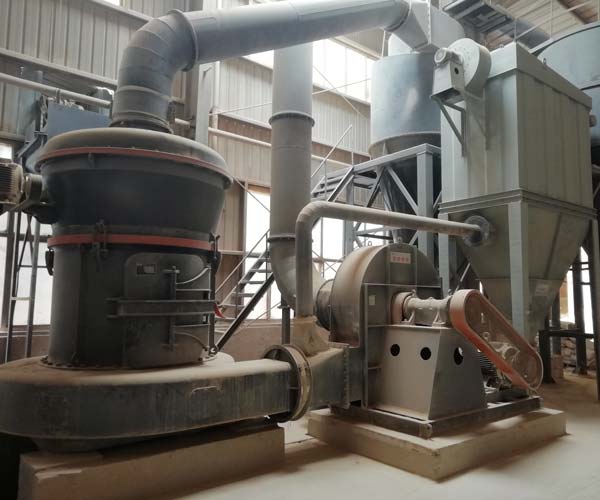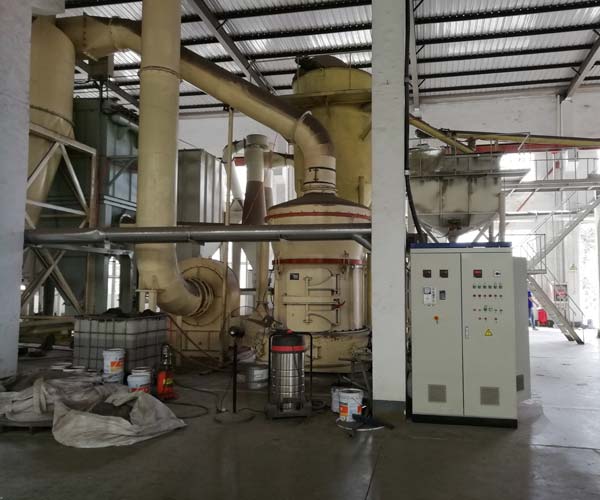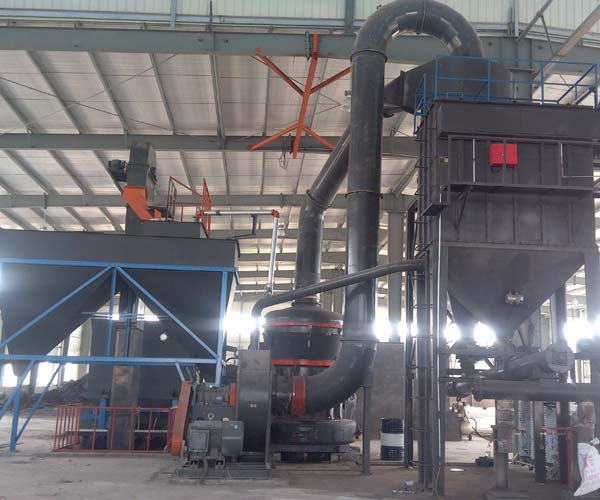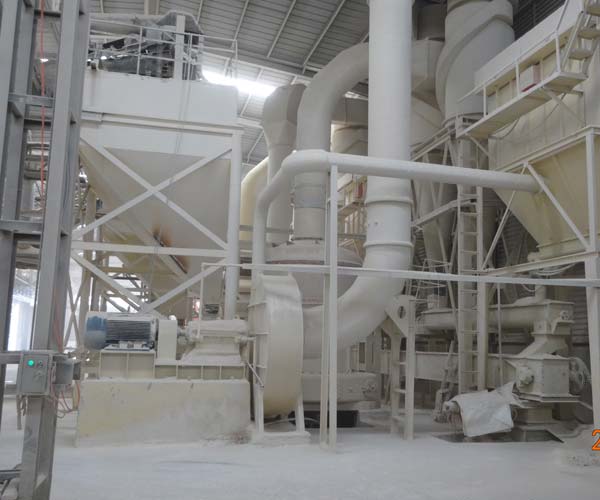
The machinery and equipment involved, including crushers, mills, and grinders, play pivotal roles in breaking down larger particles. Various grinding techniques, such as impact grinding, ball milling, and jet milling, offer tailored solutions to meet the unique characteristics of different materials.
24 Online Service

Talc, with its softness and unique properties, has been a prized mineral for centuries, finding its way into a diverse array of industries. From cosmetics to ceramics, plastics to paints, its applications are as varied as its extraction process and geological formation.
Talc, often referred to as “soapstone,” is a metamorphic mineral that is primarily composed of magnesium, silicon, and oxygen. It is renowned for its characteristic softness and the smooth, silky texture it imparts to various products. The process of extracting talc ore from mines is a blend of geology, engineering, and careful planning.
The journey begins with geological exploration. Geologists identify potential talc-rich areas by studying the geological structures and rock formations that are conducive to talc formation. The presence of certain types of metamorphic rocks, such as serpentine and chlorite schists, often indicates the likelihood of talc deposits. Once a promising site is identified, detailed surveys are conducted to assess the quality and quantity of talc present.
With the site selected, the mining process commences with drilling. Holes are drilled into the rock, and explosives are inserted to fracture the rock mass. Controlled blasting is crucial to minimize damage to the talc crystals and ensure worker safety.
After blasting, the fragmented rock is transported to the processing plant, where it undergoes crushing and grinding. The aim is to reduce the ore to a manageable size while preserving the talc crystals. This crushed material is then sorted into various grades based on its talc content and other impurities.
The next step is beneficiation, a process that involves separating talc from other minerals and impurities. Techniques like flotation are commonly used for this purpose. In flotation, the crushed ore is mixed with water and chemicals to create a slurry. Air bubbles are introduced, which attach to the talc particles and make them float to the surface, where they can be collected.
Once the talc-rich concentrate is obtained, further refining processes are applied to achieve the desired quality and purity. These may include processes like magnetic separation and high-intensity electromagnetic separators to remove any remaining impurities.
The refined talc concentrate is then dried to reduce moisture content and milled to achieve the desired particle size. This milled talc is now ready for its journey to various industries, where it will find its myriad applications.
Talc deposits are scattered across the globe, reflecting the diverse geological processes that have shaped our planet. Notable talc-rich regions include:
The Appalachian region hosts significant talc deposits, often found in association with serpentinite rocks. Vermont, in particular, is renowned for its high-quality talc used in the cosmetics and paper industries.
The Luzenac Group in the French Pyrenees is home to one of the world’s largest talc mining operations. The talc here is formed through the metamorphism of magnesium-rich limestone.
China boasts substantial talc reserves, primarily found in Liaoning, Guangxi, and Shandong provinces. These deposits are associated with talc-carbonate rocks.
The talc deposits in Brazil are found in the state of Minas Gerais, often occurring as metamorphic rocks associated with serpentinite.
Talc deposits in India are located in states like Rajasthan, Uttarakhand, and Andhra Pradesh. These deposits are associated with the Precambrian metamorphic rocks of the Aravalli Range.

The journey of talc from its raw, mineral form to a finely ground powder, ready for its diverse range of applications, involves several critical steps that collectively ensure its quality, consistency, and performance. Preparing raw talc for the grinding process involves a sequence of initial procedures, including sorting, cleaning, and crushing, each playing a pivotal role in achieving the ultimate goal of uniform particle sizes, a paramount requirement for successful grinding.
Talc, a naturally occurring hydrated magnesium silicate mineral, is often found within rock formations that have been subjected to metamorphic processes. Its softness, chemical inertness, and heat resistance make it an indispensable ingredient in various industrial and consumer products. However, before talc can take on its various roles, it must first undergo a series of preparatory steps that refine the raw material into a state suitable for further processing.
The initial phase of preparing raw talc involves sorting the mined material. This stage is crucial to separate impurities and undesirable substances from the talc ore. Various techniques are employed depending on the deposit’s nature and characteristics. One common approach is hand sorting, where skilled laborers manually remove larger impurities such as rocks and other minerals from the talc ore. This meticulous process helps ensure that the material entering the subsequent stages is as pure as possible.
Advanced sorting technologies, including optical sorting and sensor-based systems, have also made their way into the talc processing industry. These technologies utilize sensors and cameras to identify and remove impurities based on their color, shape, and other physical properties. The adoption of such technologies not only enhances the efficiency of the sorting process but also contributes to resource conservation by reducing the amount of waste material that enters the subsequent stages.
Following the sorting phase, the cleaned talc undergoes another pivotal step: cleaning. During mining and handling, talc ore can accumulate surface contaminants, such as dust, dirt, and other foreign particles. Proper cleaning not only ensures the removal of these impurities but also helps improve the mineral’s inherent characteristics, including brightness and purity. A variety of techniques, such as air separation and water-based methods, are employed to achieve the desired level of cleanliness.
Air separation, for instance, employs the principle of differences in particle density to separate talc from lighter impurities. By introducing controlled air currents, the lighter particles are carried away, leaving the cleaned talc behind. Water-based methods, on the other hand, utilize flotation techniques where talc particles attach to air bubbles and rise to the surface, while impurities sink and are subsequently removed. Both approaches contribute to enhancing the mineral’s quality and ensuring its suitability for downstream processing.
Once the talc ore has been meticulously sorted and cleaned, the next step in its transformation journey is crushing. Crushing is the process of reducing the raw material into smaller, more manageable fragments, a crucial step that not only facilitates subsequent grinding but also helps achieve the desired particle size distribution. Different types of crushers, such as jaw crushers, impact crushers, and cone crushers, are utilized depending on factors such as the ore’s hardness and the desired end-product characteristics.
The significance of crushing lies not only in particle size reduction but also in ensuring uniformity. Consistency in particle size distribution is paramount in the grinding process, as it directly impacts the efficiency and effectiveness of the subsequent milling operations. Uniform particle sizes enable more precise control over the grinding process, resulting in a final product with consistent quality and performance. Moreover, a consistent particle size distribution reduces the risk of overgrinding or undergrinding, both of which can negatively impact the final product’s properties.
The grinding process is where the crushed talc is refined further into a fine powder with specific particle sizes tailored to its intended application. The significance of achieving uniform particle sizes cannot be overstated. A consistent particle size distribution ensures uniformity in the final product’s attributes, such as texture, color, and performance characteristics. Here are a few reasons why uniform particle sizes are vital in the grinding process:
In applications such as plastics and ceramics, where talc is used as a reinforcing filler, uniform particle sizes contribute to consistent mechanical properties, such as strength and stiffness. This leads to predictable and reproducible end products.
In cosmetic and personal care products, like powders and foundations, uniform particle sizes result in a smoother texture and more even coverage. This ensures a desirable consumer experience and high-quality end products.
In pharmaceuticals and oral care products, consistent particle sizes aid in achieving homogeneous mixtures. This is crucial for accurate dosing and uniform dispersion of active ingredients.
Achieving uniform particle sizes allows for more efficient use of energy during grinding. Overcoming variations in particle sizes requires more energy and time, leading to increased operational costs.
Uniform particle sizes enable manufacturers to have greater control over the material’s behavior during processing, ensuring that it adheres to specific standards and formulations.

The grinding process involves reducing the size of solid materials to create finer particles, leading to enhanced surface area and improved material properties. Central to this operation are the primary machinery and equipment employed, along with different grinding techniques such as impact grinding, ball milling, and jet milling.
At the core of the grinding process are a range of machinery and equipment designed to effectively break down larger particles into smaller sizes. These tools are engineered to provide the required force and energy to overcome the bonds holding the particles together. The most common types of machinery used in grinding processes include crushers, mills, and grinders.
Crushers are the initial step in the grinding process, used to break down large particles into manageable sizes. These machines employ mechanical force, impact, or compression to achieve particle size reduction. Crushers are particularly useful when dealing with larger chunks of material that need to be further processed before entering the grinding phase.
Mills and grinders are central to the grinding process, responsible for reducing particles to fine sizes. Various types of mills are used, each with its unique mechanism and suitability for specific applications. Some common types include ball mills, hammer mills, and jet mills.
The grinding process encompasses a variety of techniques, each designed to cater to specific material characteristics and desired particle sizes. Understanding these techniques is crucial for selecting the optimal approach based on the material being processed. Here are three notable grinding techniques:
Impact grinding involves the use of impact forces to fracture particles into smaller sizes. It relies on the collision between the grinding media and the material, resulting in particle breakage. Impact mills, such as hammer mills, utilize high-speed rotating hammers to shatter particles, making them suitable for fragile or brittle materials.
Ball milling is a widely used technique that employs the energy of tumbling balls within a rotating drum to achieve particle size reduction. As the drum rotates, the balls cascade and crush the material, leading to further refinement. This technique is versatile and can handle a range of materials, from soft to hard.
Jet milling involves using high-speed compressed air or gas to propel particles against each other, leading to their fracture and size reduction. Jet mills are particularly effective for materials that are difficult to grind using other methods, and they offer precise control over particle size distribution.
In its natural form, talc consists of large particles that may not be suitable for certain applications. By subjecting talc to the grinding process, manufacturers can enhance its properties.
Grinding reduces the size of talc particles through mechanisms like impact and attrition. As talc particles are subjected to the grinding forces within a mill, they are broken down into smaller fragments. This reduction in particle size leads to several benefits, including improved handling, dispersion, and blending in various products.
One of the most significant advantages of grinding is the substantial increase in the surface area of the particles. Finer particles have a larger surface area per unit mass compared to coarser particles. This increased surface area enhances the material’s reactivity, aiding in processes like absorption, adsorption, and chemical reactions. In applications such as pharmaceuticals, the increased surface area can lead to faster dissolution and better bioavailability of the active ingredient.
Our Projects
Copyright © ZENITH, All Right Reserved.
